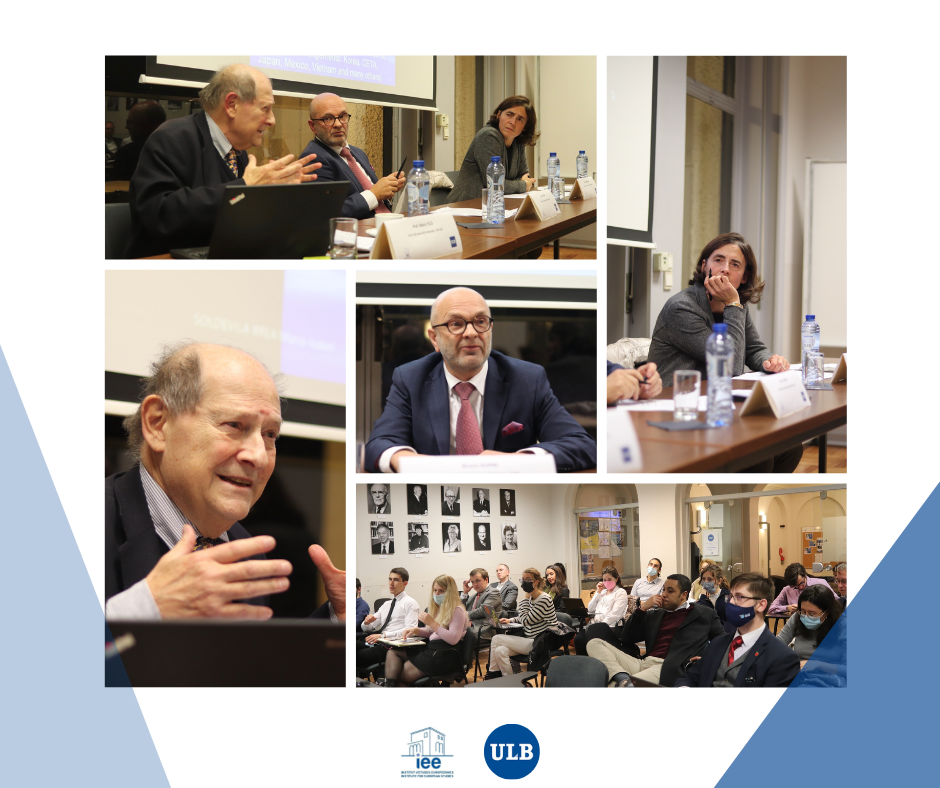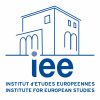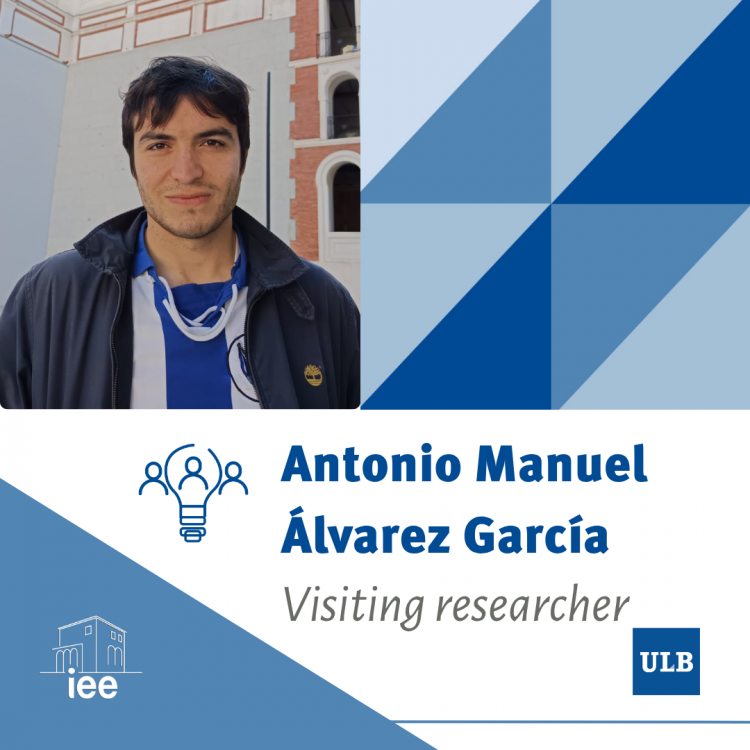The concept of EU’s Open strategic autonomy was at the center of a seminar organized by the IEE Alumni network on November 12, 2021, with the support of the Institute. The debate took place in hybrid format at the Institute for the European Studies of the ULB in Brussels in the context of the Conference on the Future of Europe. Its aim was to offer the contribution from the IEE Alumni to the works of the Conference’s bodies in the area “EU in the world”. Many IEE Alumni, students, researchers and citizens participated in the seminar both on site and online.
The seminar was introduced by Prof. Ramona Coman, President of the IEE, and chaired by Maria Schininà, Co-President of the IEE Alumni network. Two invited guest speakers shared their views on the topic: Mr Bruno Dupré, Advisor for Security and Defense, European External Action Service (EEAS) – Secretariat General, and Prof. Mario Telò, President Emeritus of the IEE-ULB and Professor at the LUISS University and the ULB.
Definition of the concept of EU’s Open Strategic Autonomy
Mr Dupré defined “Strategic autonomy” (SA) as a “wake-up call” to be more conscious of our vulnerabilities but also of our strength, both as normative power and security provider. If the expression is certainly not new (with a classical military dimension) this concept, at the hearth of the last Strategic Foresight Report, has now been expanded to all economic and financial sectors. Mr Dupré identified the apparent contradictions of the SA concept (collective where we can, autonomously when we must; SA and Multilateralism; SA and the Single (open) Market; SA and interdependence). However, he observed that what people describe as ambivalence or apparent contradiction between the terms could also be called a “balancing act” – between Strategic Autonomy and open economy, with our transatlantic partner, with our regional partners, with multilateralism.
The EU’s Open Strategic Autonomy concept in practice
Despite a lack of common agreement on the concept among Member States and even inside the EU Institutions, an effort to operationalize it has been made. A strategic toolbox has been created in two major domains: economy and security. On economy, the objective is to increase internal resilience, reduce dependencies on critical goods (health, food, raw material) and protect the twin transition with adequate strategies. Along with the Commission economic initiatives directed to support European strategic autonomy (trade good governance, foreign investment, foreign subsidies, Digital Service and Market acts) even more important are new key enablers. On this point, Mr Dupré clarified the concepts of Eco-systems (related to the 14 eco-systems created by Commissioner Breton), supply chain (referred to the protection of our sources supply), SVC (Strategic Value Chain, referred to key sectors where European Industry lags behind). The SVC best illustrates the challenges faced by the EU and the question of strategic autonomy: controlling the most crucial segments of global value chain (micro-processors, hydrogen, batteries, Internet of Things…) is a question of economic survival for the EU. As for the security domain, Mr Dupré mentioned the Strategic Compass, in particular focusing on its two dimensions: the need to reduce critical capability gaps and strategic dependencies and operate full range of civilian and military crisis management tasks as well as resilience.
However, Mr Dupré identified the general issue to bring overall coherence and a more integrated approach to these strategies both at economic and security level, pointing out that the silo Commission approach can represent a serious limit to a strategic culture. In that regard, he mentioned the limits of the IPCEI project (Important Projects of Common European Interest), driven by the French and Germans, and pointed out the need of better coordination between all the security actors and bridging gaps between the economic and security sector. According to Mr Dupré, the success of Strategic Autonomy lies mainly in renewed partnership to increase external resilience with like-minded and beyond like-minded partners. In this respect, the question for the EU is how to ensure the necessary pivot to Asia while consolidating the neighborhood and preserving a special link with Africa. The immediate priority, for the short term, is restoring trust with the US; their support to the Strategic compass is essential. However, having good relations with the US does not mean that we have to see China only as a rival. Europe needs more than just a transatlantic partnership to become geopolitical: China, Russia, and Multilateral Organizations (WTO reform) are all needed through a balancing act.
The future of the EU’s Open Strategic Autonomy
Finally, Mr Dupré briefly focused on the upcoming French Presidency of the Council. He observed that it is difficult to foresee how they build upon strategic autonomy considering next year’s Presidential elections as well as the uncertainty linked to the COVID situation. However, three issues, which are extremely relevant for the concept of SA, are expected to be of major importance for the French Presidency: innovation policy, industrial policy and the value chain. Beyond the topic of the Presidency, Mr Dupré also noted that 2022 is a crucial year especially in the security and defense domain, because of the confluence of several rendez-vous, which could produce elements of convergence but also tensions. In that regard, Mr Dupré referred to the following strands: the NATO strategic concept, the Strategic compass at EU level, the National security strategy in the US, the EU-US Security and Defense Dialogue, the new Joint Declaration EU-NATO.
Discover the slides of Mr Bruno Dupré’s presentation.
The external conditions for an ambitious Strategic Autonomy
Professor Telò approached the concept of strategic autonomy, raising some preliminary questions. Firstly, are there the external conditions for an ambitious strategic autonomy? The EU is not a state, but a regional organization which became an international power with an international identity and some forms of autonomy. During the Cold War, neither strategic autonomy nor civilian power could be seriously implemented: the European Community did not have the competences in defense and security as well as the institutional set fit to cope with a world shaped by nuclear bipolar deterrence.
With the collapse of the Soviet block, the new multipolarity represented an opportunity of multiplication of new actors including regional entities. The Maastricht, Amsterdam, Nice and finally the Lisbon Treaties set the framework for the establishment and evolution of the CFSP/CSDP and for the emerging of the EU as international political actor. However, if the role of the High Representative has been enhanced over the years, the unanimity rule in these areas has not been changed, producing veto players and representing an intrinsic element of weakness for Europe.
Describing the international scenario, Professor Telò raised a general open question: is the world order going towards a tri-parties game (where EU is the third party, after US and China) or towards a new bipolarity, where US and China are part of a sort of “Premier league” and the EU, together with India, Brazil, etc., a “Second league” member? At economic level, the EU power, despite Brexit, is not far away from US and China. However, EU’s security is still based on art 5 of NATO, and, if the EU provisions on external relations can guarantee some form of autonomy, they cannot guarantee full independence. Moreover, despite the debate on the European sovereignty, the EU is not a State, with the characteristics of sovereignty that belong to a State. In this context, the EU strategy towards China is relevant to stop cold war trend. In that respect, Professor Telò focused on the relevance of possible convergences with China. The strategy on China is an important test for the same concept of Strategic Autonomy, which has to be “Open” and include the new generation of Trade and Investment arrangements. In that regard, professor Telò mentioned the China Comprehensive Agreement on Investment, which, after 7 years of negotiations and despite not being perfect, at least shows the possibility to improve market access and China’s domestic rules. Only within a multipolar, multilateral and multilevel global governance can the EU’s strategic autonomy external conditions be consolidated.
The internal conditions for an ambitious Strategic Autonomy
As for the internal conditions of an EU’s ambitious strategic autonomy, Professor Telò identified several elements of weakness. Firstly, the EU must combine far abroad policies with the Eastern and Southern neighborhood policies. No power is a true international power without peacefully shaping its neighborhood. Then, professor Telò mainly addressed the institutional dilemma: how to cope with veto players within the Council? He observed that three options are on the table:
- Using the tools offered by the current Treaty notably art 20 TEU on closer cooperation. However, Professor Telò pointed out the institutional difficulties and contradictions in the procedures directed to establishing forms of enhanced cooperation and demanding unanimity (art 329-30 TFEU);
- Changing the Treaties, as follow up of the CoFE, in order to replace the unanimity rule in the Council with the qualified majority rule in the foreign and security policies. This solution is highly desirable but not realistic. Professor Telò observed as some Member States ask the change of Treaties in order even to expand the unanimity rule to other sectors;
- The third best option is setting a new Treaty, outside the current Treaties, which would be expression of a coalition of like-minded countries willing to advance in the CFSP-ESDP towards strategic autonomy. This extra-Treaty would be transitional, based on the model of the Schengen agreement (born outside the Treaty and finally incorporated in the EU framework) and open to other Member States. Its hard core would be represented by the role of the High Representative, his/her responsibility towards the Parliament and the qualified majority voting: like in other crucial moment of the history of EC/EU, it would be composed of Eurozone members (according to the Mitterrand model of concentric circles).
This last proposal captured the interest of the participants. It was in particular noted that a similar solution was in the past adopted for the Treaty on Stability, Coordination and Growth (“Fiscal compact”). That Treaty was established outside the Treaties too and had a transitional nature, with a specific provision envisaging its incorporation into the EU legal framework. However, the implementation of this last provision proved to be extremely complex. Another issue underlined by the participants was the “intergovernmental nature” of the solution, which could affect its democratic legitimacy and role of the European Parliament. However, on general terms, it was noted that there is an expectation from citizens for rethinking the unanimity rule, which is one of the most popular proposals in the section “EU in the world” of the CoFE platform.
Discover the slides of Prof. Mario Telò’s presentation.
The role of the citizen
The role that citizens can play in the context of CoFE was especially addressed during the debate. It was noted that there is a disconnection between EU policies and citizens, in particular in the area EU in the world. Moreover, the possibilities offered to citizens by CoFE, through the multilingual platform, are hardly known by citizens. It is necessary to communicate more and spread the word about the Conference in order to make citizens’ participation possible. The Conference represents in fact an historical exercise for addressing Europe’s policies and challenges.




